
Railgun technology:Japan ATLA to join European research project
・ISL has seen mid-April the visit of an ATLA delegation
・Collaboration for research, development of Railgun tech
Naval News Article with the contribution of Yoshihiro Imada, Nathan Gain and Xavier Vavasseur.
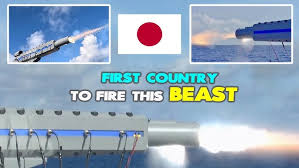
The French-German Research Institute : Saint-Louis (ISL) :
ISL has seen mid-April the visit of an ATLA delegation, in charge of research and development for railgun technology
Japanese Acquisition, Technology and Logistics Agency :
now paving the way for an agreement for further cooperation on electromagnetic gun technology.
Article with the contribution of Yoshihiro Imada, Nathan Gain and Xavier Vavasseur.

ISL published in an official announcement
three MoDs (France, Germany, and Japan) involved in this project signed last May 30th.
1.Terms of Reference (TOR) with the objective “to explore Railgun technologies”
2.Collaboration for research, development, test of Railgun technologies”.
ATLA and ISL cooperation agreement: video interview
Here is our video interview with ATLA and ISL representative regarding the cooperation agreement.
Regarding the signing of this agreement, ATLA responded to Naval News inquiries:
1.Naval News: Regarding the cooperation among Japan, France, and Germany this time,
2.Could you please provide information on its objectives, contents, and expected outcomes as much as possible?
ATLA: The cooperation based on the implementation guidelines signed this time
1.It aims to facilitate the smooth exchange of information and opinions on railgun tech among the participating institutions.
2.This is to explore the potential for collaboration in the research, development, testing, and evaluation of railgun tech.
By utilizing these implementation guidelines, we intend to steadily work towards the early practical application of railguns to accelerate the enhancement of our national defense capabilities.
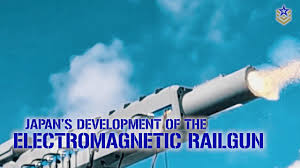
Question 1 :
Naval News:
officials from the ATLA recently visited the ISL (Institute of Saint-Louis),
the heart of railgun development projects in Europe, including France and Germany.
How do you think ’ATLA’s research on railguns, including the recent agreement’ ?
Any impact on Europe’s THEMA project, or will it create synergistic effects between Japan and Europe?
ATLA: Since ATLA is not participating in Europe’s THEMA project, it is difficult to comment on its impact on the project.
However, we hope that the cooperation under these implementation guidelines,
will yield results that contribute to the early practical application of railguns in both Japan and France/Germany.
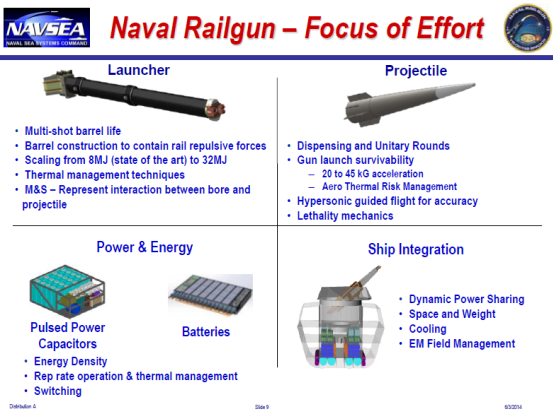
Questin 2 :
Naval News :
Besides Europe , it is understood that collaboration with the US is also being pursued regarding railgun development.
How might such international collaborations impact the current development of railguns?
ATLA :
As the security environment surrounding our country becomes increasingly severe.
1.Steadily work towards the early practical application of railguns by actively promoting collaboration,
2.with allied and like-minded nations to secure technological superiority.
Japan is a widely recognized leader in this disruptive technology.
Indeed, ATLA started its own railgun development program in 2016 with first demonstrator firing test taking place two years later.
The last important milestone happened in October 2023 when ATLA conducted first official ship-board firing test of a railgun.
In the Japanese MoD, railgun development is conducted by the Ground Systems Research Center (GSRC),
a division of the Acquisition, Technology & Logistics Agency (ATLA):
ATLA began full-scale development of the railgun in 2016.
“Research on Electromagnetic Acceleration Systems,” the research was conducted from FY 2016 through FY 2022.
The target in this research was a muzzle velocity of 2000 meters per second and a barrel life of 120 rounds.
In other words, the goal was to achieve stable firing up to 120 rounds at a constant muzzle velocity.
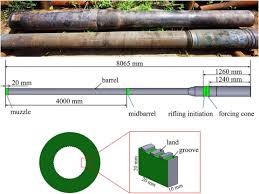
In the case of a conventional firearm:
Damage to the barrel :
1.It was caused by the pressure generated by the explosion of gunpowder would be a problem,
2.but this problem does not occur in the case of a railgun.
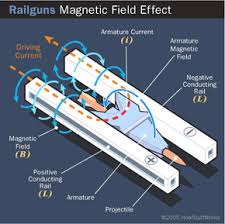
In the case of a railgun:
On the other hand, damage caused by heat from the high current ,
flowing through the rail and wear from contact between the armature and the rail is a problem.
As the surface of the rail is eroded :
1.it leads to performance degradation, such as a reduction in muzzle velocity.
2.Therefore, copper was initially used as the material for the barrel rail,
It was changed to a different blend of metals and other materials throughout the research.

Blend of metals and other materials:
As a result, it was confirmed that no significant damage occurred to the barrel rail even after 120 rounds were fired.
Based on the results of the research to date:
the project is now moving on to “Research on Future Railgun,” It will be conducted from FY2022 to FY2026.
1.While previous research has focused on firing bullets from the railgun,
2.the current research aims to advance this research into a “gun system” ,
3.equipped with a series of mechanisms for actual operation. It includes:
・Continuous firing of projectile
・Fire control system
・Stability of projectile after launch

About European electromagnetic railgun :
Under the leadership of the Franco-German Research Institute of Saint-Louis (ISL),
the European Defense Agency (EDA) launched in May 2020 the PILUM project.
1.in order to show the feasibility to construct an electromagnetic railgun (EMRG)
2.for artillery applications which can reach standoff distances up to 200 km.
3.Electromagnetic railguns are launchers using very high electrical energy by using the Lorentz force
4.to obtain significantly higher initial velocities than those of chemical guns.
The consortium has brought together nine partners from five European countries.
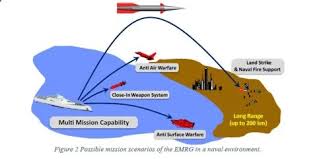
the PILUM project : Projectiles for Increased Long-range effects Using Electro-Magnetic railgun:
Technological and advanced scientific expertise :
ISL, the French-German Research Institute of Saint-Louis,
European leader in electromagnetic acceleration and coordinator of the project.
1.the Von Karman Research Institute (Belgium): specialised in fluid dynamics and propulsion:
2.two system integrators:Naval Group and Nexter Systems (France):
3.two ammunition suppliers: Diehl Defence (Germany) and Nexter Munitions (France)
4.Explomet (Poland): a small company specialised in the explosive cladding of metals:
5.ICAR (Italy): manufacturer of high-density electric capacitors:
6.Erdyn Consultants (France), an expert in the management of European collaborative projects
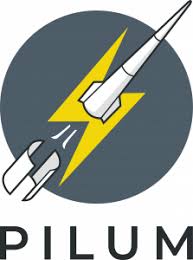
the PILUM team:
The final phases focused on system engineering issues and scenarios for integrating an EMRG on naval and land platforms.
1.the PILUM team simultaneously carried out a series of numerical and analytical simulation exercises,
2.laboratory tests, and open space experiments for each of the three subsystems.
“The results exceed expectations,” the ISL said.
PILUM also leads to a gun concept:
1.PILUM selected for in-depth study and to power and aiming concepts adapted to the needs of an EMRG.
2.PILUM also made it possible to progress on a concept of a hypervelocity projectile capable of reaching Mach 6,
Wind tunnel tests, on computational fluid mechanics, as well as free flight tests were carried out at Mach 5,” the ISL added.
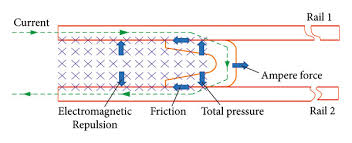
the high temperatures and friction problem:
1.On the barrel side, the high temperatures and friction generated the high temperatures and friction
2.They can be compensated for with a wear-resistant coating, thereby increasing the lifespan.
EMRG can achieve compared to conventional artillery, strike distances of 200 km and more are possible,
These first steps will serve as a basis for progressing in a roadmap established until 2035.
Japan and EU:
Japan and EU are far to be the only to eyes this technology development.
Many nations have electromagnetic railgun research projects at various stages of advancement.
The case of the United States :
Office of Naval Research, Naval Surface Warfare Center Dahlgren Division and BAE Systems ,
but these efforts have reportedly stopped,
India (DRDO), the UK (DRA), Russia:as well as China
It was the only one that appears to have also conducted at sea tests of its prototype until Japan’s test.
